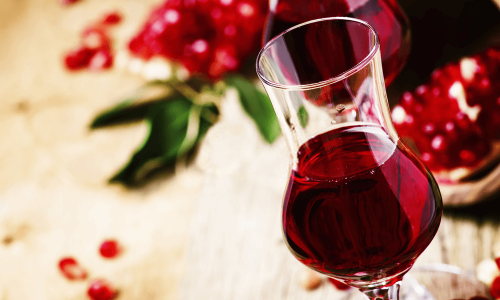Azerbaijani cuisine refers to the cooking styles and dishes of Azerbaijan. Many foods that are indigenous to the country can now be seen in the cuisines of other neighboring cultures. For the people of Azerbaijan, food is an important part of their culture and is deeply rooted in the history, traditions and values.
Out of 11 climate zones known in the world, the Azerbaijani climate has nine. This contributes to the fertility of the land, which in its turn results in the richness of the cuisine.
Azerbaijan’s national cuisine is closer to Eastern cuisine due to taste and preparation of the dishes, as well as adding a dark spice and flavor additives. Contemporary Azerbaijan cuisine retains traditional methods of preparation of dishes while incorporating modern cooking requirements and preparations.
Azerbaijani dishes have traditionally been cooked with copper utensils in copper cookware. Copper bowls and plates are still commonly used as serving dishes.
Azerbaijani cuisine is full of different types of greens and vegetables such as aubergine, tomato, sweet pepper, spinach, cabbage, onion, sorrel, beet, radish, cucumber, green beans. Rice and products made from flour are widely used in national cuisine. It is famous for vegetables and greens used seasonally in the dishes. Fresh herbs, including mint, coriander, dill, basil, parsley, tarragon, leek, chive, thyme, marjoram, green onion, and watercress are very popular and often accompany main dishes. The majority of national dishes are prepared of lamb, beef and poultry meat. Dishes prepared of minced meat are more prevalent. The sea, lakes and rivers of the Republic of Azerbaijan are abundant with different fish species, particularly white sturgeon. Sturgeon fish is widely used in preparation of national dishes. The Caspian Sea is home to many edible species of fish, including the sturgeon, Caspian salmon, kutum, sardines, grey mullet, and others. Black caviar from the Caspian Sea is one of Azerbaijan’s best known delicacies well sought after in other parts of the world, including former Soviet countries.
One of the most reputed dishes of Azerbaijani cuisine is plov from saffron-covered rice, served with various herbs and greens, a combination totally distinct from those found in Uzbek plovs. Azerbaijani cuisine includes more than 40 different plov recipes. Other second courses include a wide variety of kebabs and shashlik, including lamb, beef, chicken, duck and fish (baliq) kebabs. Sturgeon, a common fish, is normally skewered and grilled as a shashlik, being served with a tart pomegranate sauce called narsharab. Dried fruits and walnuts are used in many dishes. The traditional condiments are salt, black pepper, sumac, and especially saffron, which is grown domestically on the Absheron Peninsula. The third courses include soups which the types of this dish are more than 30 in Azerbaijan national cuisine. These include kufta bozbash, piti prepared of meat and dovga, ovdukh, dogramach, bolva prepared of greens and yoghurt. Some soups are served in national or interesting and unusually-shaped bowls.
Black tea is the national beverage, and is drunk after food is eaten. It is also offered to guests as a gesture of welcome, often accompanied by fruit preserves.
Azerbaijani cuisine has a number of light snacks and side dishes to open or accompany the main meals: a plate of aromatic green leaves called goy, pieces of chorek (bread), choban (a tomato and cucumber salad), and sometimes white cheese or qatik (sour yogurt). Cold snacks are generally served separately from the drinks.
Breads;
Different types of bread are baked in Azerbaijan like: flat, rolling, flat bread, lavash, səngək, xamralı, thick, thin, crepes, cakes, bread oven (tandoor bread).Tandoor bread is a type of bread baked in a clay oven called a tandoor. Mostly it is used for baking bread and cooking meat, but generally any type of food can be cooked in tandoor ovens. The secret of tandoor oven is process of heating up the oven. Wood is put on the ground and ignited. It is necessary to wait till it becomes glowing charcoal.
By this moment the oven will reach temperatures of around 400*C. The food is basically cooked from the heat of the walls. High temperature ensures very fast cooking.In the Middle Ages, tandoor oven was one of the common facilities of the population lived in Old City (Icheri Sheher). This has been discovered during the archaeological excavations in different areas of Old City. During the meeting held in Ethiopia, the UNESCO Intergovernmental Committee for the Safeguarding of the Intangible Cultural Heritage decided to include lavash in the Representative List of the Intangible Cultural Heritage of the organization.




